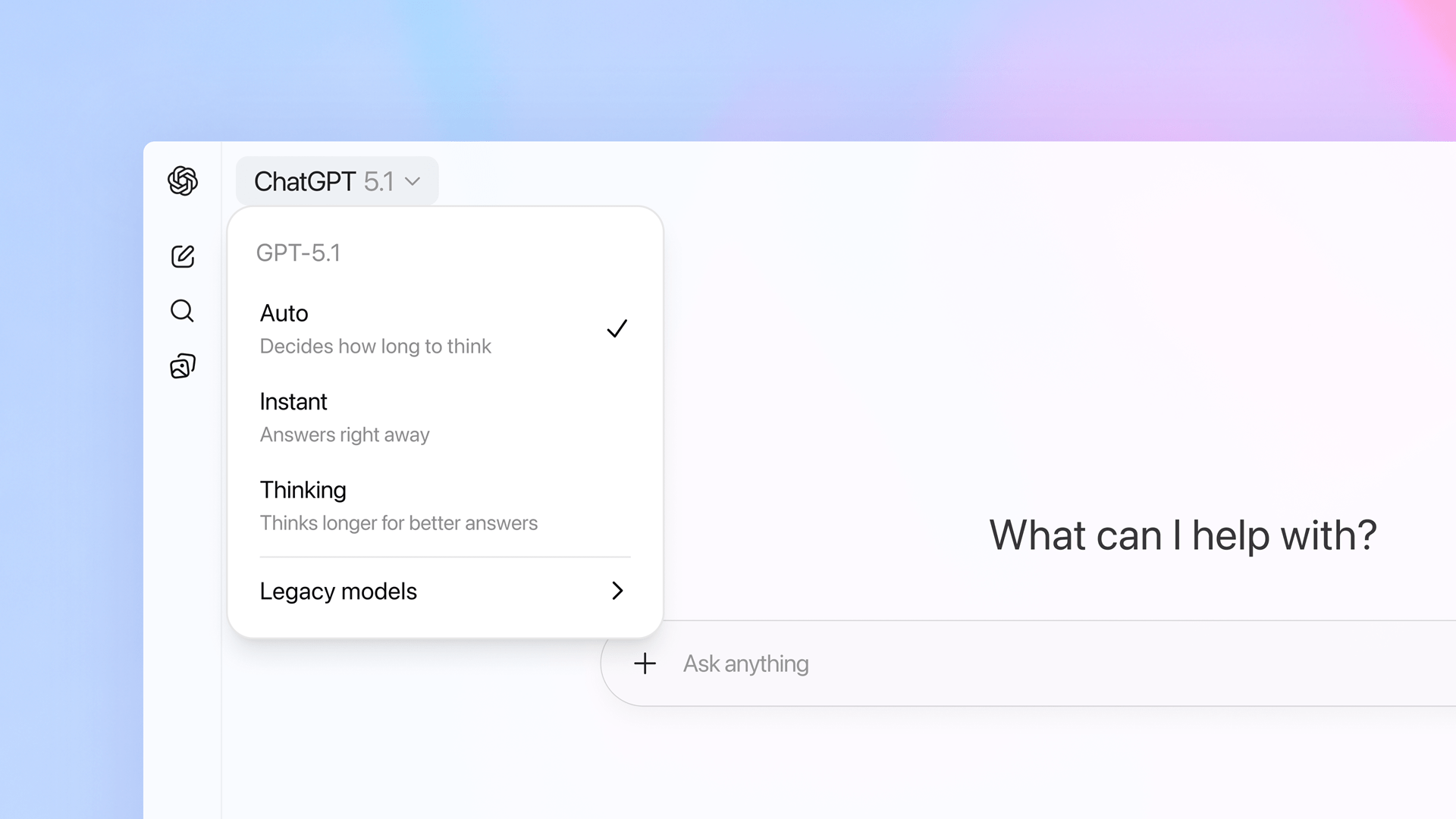- OpenAI revealed its new GPT‑5.1 model and made it the default option for ChatGPT
- ChatGPT includes faster and deeper instant thinking variants of GPT-5.1, and applies adaptive reasoning to decide when to use each.
- ChatGPT also added personality controls allowing users to adjust the manner and style of the AI’s responses, even in the middle of a conversation.
OpenAI has introduced the highly anticipated GPT-5.1 AI model, integrating both the “Instant” and “Thought” variants into ChatGPT as the new default for paid subscribers.
After the controversial release of GPT-5 earlier this year, the focus this time seems to be on responsiveness, clarity and flexibility when it comes to how AI mimics human personalities.
GPT-5.1’s approach to improving ChatGPT seeks to encourage people to think of the AI chatbot as more than just a talking search bar. GPT‑5.1 Instant will be the model most people use by default, but OpenAI made a point of saying that the speed won’t take away from a warmer effect and stricter adherence to user instructions.
GPT-5.1 thinking, on the other hand, retains its more deliberative style for complex tasks, but it is better at distinguishing when to take its time and when to speed up. Together, they are a response to user complaints that GPT-5 was difficult to use.
And while the Instant model is ideal for answering queries, ChatGPT applies adaptive reasoning to its responses. So if a question is tricky or ambiguous, it will take a little longer to answer, something the faster version of GPT-5 couldn’t do.
Coming from the other direction, the GPT-5.1 thinking model reworks GPT-5’s approach to better avoid jargon and be more transparent in the steps needed to respond to prompts.
Personal personality
Beyond the models themselves, OpenAI deploys a significantly refined tone control system. While ChatGPT first added personality toggles a few months ago, they are now easier to use and can be adjusted in real time.
Depending on how you want ChatGPT to respond, you can choose from tones and styles beyond the existing friendly and effective options to make the AI cynical, nerdy, blunt, or quirky.
All of these options change the voice and broadcast immediately in all conversations. Previously, users had to start a new chat for tone changes to take effect. With GPT‑5.1, you can update tone, emoji frequency, or verbosity in the middle of an ongoing exchange, and the model will adjust instantly.
OpenAI also clearly remembers the outrage of many users when GPT-5 was released and GPT-4o disappeared. Many users said it seemed robotic and that they forgot previous answers too quickly and wanted their old model back. The response seemed to surprise the company, but it appears to have learned its lesson.
GPT‑5.1 will coexist with older models for at least three months, giving users time to compare versions, provide feedback, and decide what works best for them. Paid users will see the models first, followed by free tier users, with older models available in a drop-down list for direct comparison.
The gradual rollout is partly due to server load, but it’s also a sign that OpenAI is listening. OpenAI also promises rolling updates through the GPT‑5.1 generation, rather than waiting for a GPT‑6. This iterative, reactive development cycle is a smart move for a product that people use every day, not just when they want to experiment.
Ultimately, GPT‑5.1 doesn’t reinvent the wheel, but it arguably makes the wagon ride easier. By focusing the update on the clarity of ChatGPT, with variable speed and personalized tone, OpenAI avoids moving too fast for users attached to existing models while still setting up more comprehensive upgrades in the future.
Follow TechRadar on Google News And add us as your favorite source to get our news, reviews and expert opinions in your feeds. Make sure to click the Follow button!
And of course you can too follow TechRadar on TikTok for news, reviews, unboxings in video form and receive regular updates from us on WhatsApp Also.

The best business laptops for every budget




